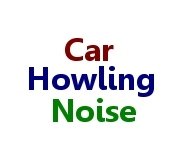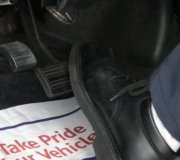Axle shafts cannot make that kind of noise. Ninety nine percent of the time when the noise sounds like an airplane engine and it is still there with new wheel bearings, it is due to improper installation procedures. It is critical that no vehicle weight be placed on the bearing assembly unless the axle nut is torqued to specs, and that spec is uncommonly high on some GM models. A typical torque spec is 180 foot pounds, and must be set with a click-type torque wrench. Some GM's call for 240 foot pounds.
Often do-it-yourselfers and inexperienced mechanics will set the vehicle down on the tire to hold the axle shaft from rotating so they can tighten the axle nuts. At that point the damage has been done and the new bearing will be noisy. Instead, stick a screwdriver through one of the cooling slots in the brake rotor to hold the axle shaft, then tighten the axle nut to specs.
To verify the new bearing is noisy, you can run the truck, in gear, on a hoist, and listen next to it with a stethoscope. You can use a tool called a "Chassis Ear" to identify the cause. That is a set of six microphones you clip to suspect parts, then you switch between them with a switch box while listening with head phones. A third way that works best when you have front coil springs is to raise that tire off the ground, reach over the tire and lightly wrap your fingertips around part of the spring, then slowly spin the tire with your other hand. If that bearing is noisy, you will feel the buzzing-type of vibration in the spring.
Monday, May 21st, 2018 AT 6:32 PM


